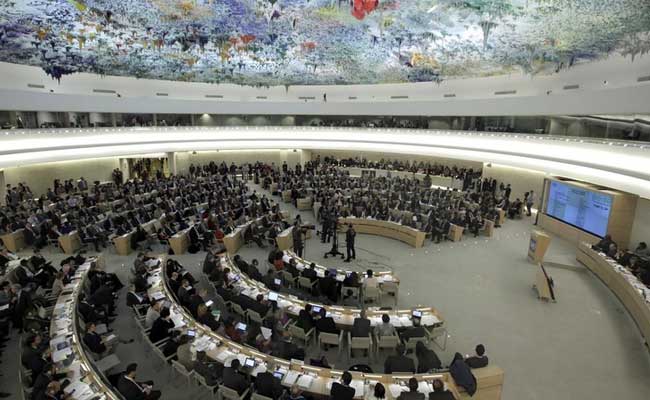Assam poll dates: Geographical, ethnic & linguistic factors at play | India News – Times of India
GUWAHATI: The Election Commission of India (ECI) seems to have strictly followed distinctive geographical, ethnic and linguistic divisions while finalizing the poll schedule for the coming Assembly assembly election.
It has also paid special attention to the state’s two biggest festivals — Rongali Bihu and Pohela Boishakh (in Barak Valley) — while finalizing the schedule. Both the festivals are held in mid-April, the last phase of elections in Assam will conclude well before that.
The Brahmaputra Valley (comprising indigenous Assamese and tribal populace mostly in Upper Assam), Bengali-dominated Barak Valley and minority and Bodo-dominated Western Assam will go to polls in three different phases, keeping in view all the aforementioned aspects, besides keeping security and convenient logistic movement factors in mind.
The vast tea belt dominated by the Adivasis of Chhotanagpur Plateau-origin will go to the polls in the first phase on March 27 when elections will be held in 47 seats. Sources said the Upper Assam region, where Bihu is the most important festival, has been kept in the first phase. “The Rongali Bihu fever grips the Upper Assam, inhabited by the indigenous Assamese and tribal communities, the most. Probably the EC considered the representation by various stakeholders and decided to hold elections first here,” said spokesperson of the Assam chief electoral officer’s office, Rahul Chandra Das.
The hill districts of Karbi Anglong and Dima Hasao have been clubbed with the three Barak Valley districts — Cachar, Karimganj and Hailakandi — for the convenience of the force movement as polling is schedule to be held in this region in the second phase on April 1. Elections will be held in 39 seats in Phase II.
The third and final phase of elections will cover most constituencies in lower and western Assam as well as the Bodoland Territorial Region (BTR) areas that have become a vital factor in successive Assam elections. Assam chief electoral officer Nitin Khade said the poll schedule supports the smooth movement of logistics and forces. Most of the vehicles are requisitioned from Guwahati and nearby areas for elections in Assam. “Criss-cross movement of logistics and forces is undesirable. From the upper Assam region, travelling through central and Barak Valley districts in the second phase, the polls will conclude in lower or western Assam finally,” Khade added.
Besides the Bodo-inhabited region, the migrated Muslims play a decisive role in lower Assam region where the ruling BJP coalition needs to win desperately to prove their pan-Assam acceptability. The saffron party has already emerged strong in the Upper Assam region, hill districts and the Barak Valley. But it needs to battle the adversities in lower and central Assam region where a delay by the government in endorsing the updated National Register of Citizens (NRC) may put the ruling coalition in trouble.
For the ruling BJP, the Citizenship Amendment Act (CAA) issue, too, may put it in a quandary as the Barak and Brahmaputra Valley remain in opposite poles as far as the CAA implementation is concerned. Unlike the Barak Valley, most people and organizations in the Brahmaputra Valley, including central and lower Assam, have vehemently opposed the CAA since 2019. Implementation of Clause 6 of the Assam Accord, which guarantees the politico-socio-cultural identity of Assamese people, could become a game-changer.
A political commentator said the last phase in lower Assam, where BJP is comparatively sceptical of its performance, can give them an edge. “If BJP can show its strength in rest of the state, where they have performed well in successive elections, the pendulum may swing in its favour automatically in the last phase in lower Assam,” he added.
Political analyst and Gauhati University professor Akhil Ranjan Dutta said, “BJP’s electoral victory in Assam is dependent on consolidation among certain communities — tea tribes, Scheduled Tribes and Bengali Hindus. The resources that the government has already distributed through the different beneficiary schemes can be a deciding factor.”
As far as poll campaigns are concerned, BJP is far ahead of others. It has a sitting CM (Sonowal) and NaMO, Shah and Nadda have been regularly visiting the state. It did not have any CM face in 2016.
On the other hand, Congress is yet to find a leader with a pan-Assam face since the death of former CM Tarun Gogoi. Its partnership with Badaruddin Ajmal’s AIUDF is still at the nascent stage. Besides, two regional parties, AJP and Raijor Dal, may cut into Congress votes while strongly challenging BJP over CAA.
“The decision of the ECI reflects the demand of the prevailing situation and we welcome the holding of polls in the state in three phases,” state unit president of the BJP, Ranjeet Dass said.
Assam Congress media chief Bobbeeta Sharma added, “We wanted three-phase elections but after Bihu. BJP wanted two phase before Bihu. So, the EC kept both the parties’ request I guess.”

